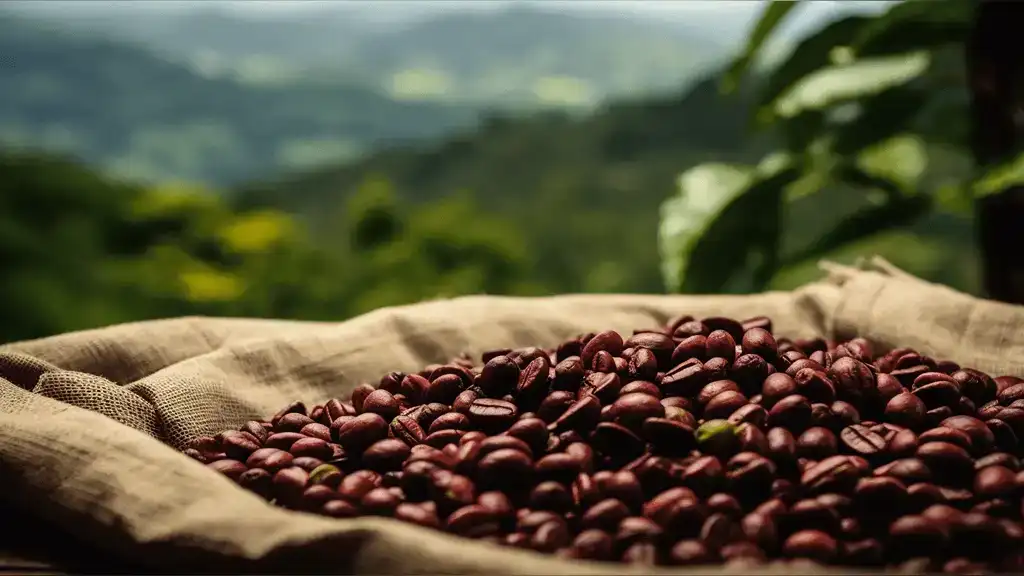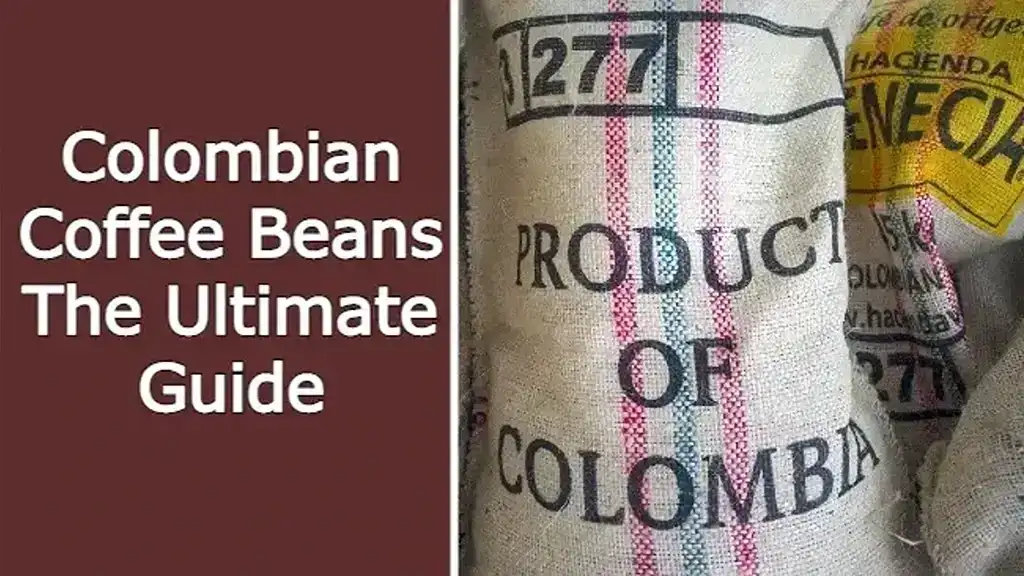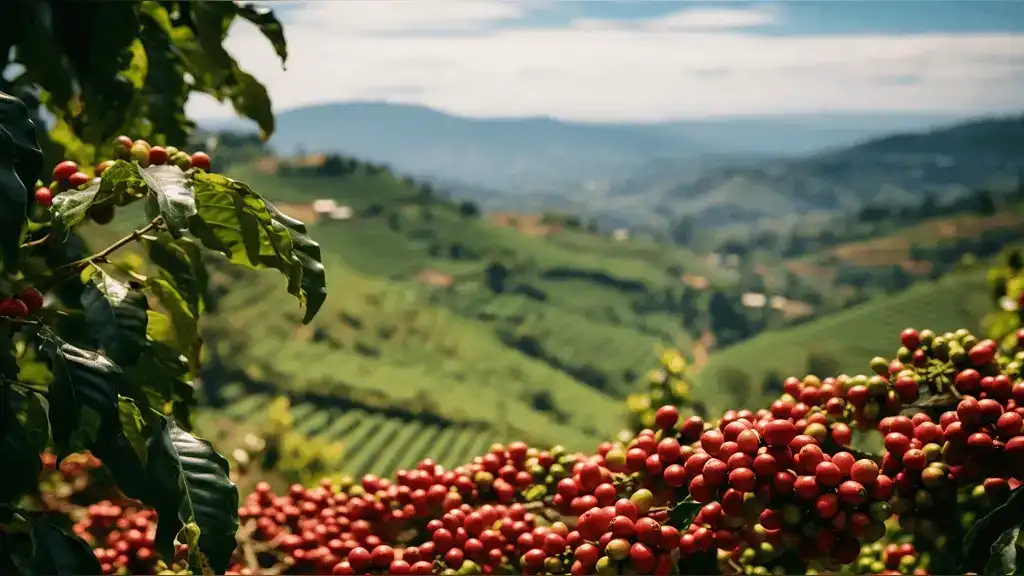As coffee drinkers gear up for their morning cup, they are increasingly looking for something new and unique. And they’re finding it in Venezuelan coffee beans.
Grown in the Andes mountains, these beans have a flavor that is winning over coffee lovers everywhere. They are also Fair Trade certified, which means that the farmers who grow them receive a fair price for their hard work.
So if you’re looking for something special, be sure to give Venezuelan coffee beans a try!
History of Venezuelan coffee beans:
Coffee was first introduced to Venezuela in the early 1800s by Catholic missionaries. At that time, only a few plants were brought into the country and grown for personal use.
It wasn’t until the mid-1800s that coffee production began in earnest, with large plantations being established in the central region of the country.
By the early 1900s, Venezuela had become one of the leading coffee producers in the world. The rich soils and ideal climate of the Venezuelan mountains were perfect for growing coffee, and the country soon became known for its high-quality beans.
In recent years, Venezuelan coffee farmers have faced many challenges. Economic instability and political turmoil have made it difficult for them to sell their beans on the international market.
But thanks to initiatives like Fair Trade, they are beginning to get the recognition and support they deserve. Interested in exploring another coffee journey? Check out our Complete Beans Guide: Cuban Coffee for a unique perspective.
Coffee cultivation methods in Venezuela
The coffee cultivation methods vary depending on the region where the coffee is grown. In some areas, coffee is grown on large plantations, while in others it is grown on smaller farms. In some regions, coffee is grown under shade, while in others it is grown in full sun.
The most common type of coffee cultivation in Venezuela is called “conventional” or “industrial” farming. This type of farming involves clearing a piece of land to create a large farm. Coffee trees are then planted in rows and watered with irrigation systems. Fertilizers and pesticides are often used to help coffee trees grow.
Coffee growers in Venezuela also use a method called “sustainable” farming. This type of farming tries to avoid using chemicals and pesticides. Instead, sustainable farmers use organic methods to help the coffee trees grow.
They also often plant other crops, such as vegetables or fruits, between the rows of coffee trees. This helps to keep the soil healthy and prevents erosion.
Coffee growers in Venezuela have to deal with many challenges. The biggest challenge is the volatile price of coffee. The price of coffee can go up or down a lot depending on what is happening in the world market.
This makes it hard for farmers to predict how much money they will make each year. Another challenge is the spread of diseases and pests. Coffee growers have to constantly watch for signs of problems so that they can treat the trees before it is too late.
Despite the challenges, coffee cultivation is an important part of Venezuela’s economy. Coffee is one of the country’s main exports. It is also an important source of employment for many people in rural areas.
Embark on a journey through the lush landscapes of Venezuelan coffee! Uncover the distinct characteristics shaped by the Coffee Belt’s regions. Delve deeper into the world of coffee with the Discovering Coffee Cultivation Regions.
The coffee industry in Venezuela
The coffee industry in Venezuela is in a very dire situation. The country used to be one of the top producers of coffee in the world, but now it is struggling to keep up with production.
The main reason for this decrease in production is the lack of investment and infrastructure in the country. Many factors have contributed to the decline of the coffee industry in Venezuela, but the main one is the government’s policies.
The Venezuelan government has been implementing policies that have made it very difficult for coffee farmers to produce their crops. These policies have included things like price controls, export restrictions, and import tariffs.
Unfortunately, this leads to a very difficult situation for farmers to make a profit from their coffee production. As a result, many farmers have decided to abandon their farms altogether. This has further contributed to the decline of the coffee industry in Venezuela.
The country has very few roads and railways, which makes it difficult to transport coffee beans to processing facilities.
Additionally, there are few coffee processing facilities in the country, which means that farmers have to process their coffee beans by hand. This is a very time-consuming and labor-intensive process, which further reduces the profitability of coffee production in Venezuela.
Coffee production Methods in Venezuela
Coffee production in Venezuela is an important economic activity for the country. The nation is one of the world’s top producers and exporters of coffee, and coffee beans are grown in almost every region of the country. Venezuelan coffee is typically divided into two categories: Arabica and Robusta.
Arabica coffee beans are grown at higher altitudes and produce a more delicate flavor, while Robusta beans are grown at lower altitudes and have a more robust flavor. Coffee production in Venezuela has been greatly affected by political turmoil in recent years, but the industry continues to play a significant role in the economy.
The most common method of coffee production in Venezuela is called the pulped natural method. In this method, coffee cherries are picked by hand and then pulped using a machine. The coffee beans are then fermented for 12-36 hours, depending on the desired flavor profile.
After fermentation, the beans are washed and dried in the sun or in mechanical dryers. Once dried, the coffee beans are sorted and graded before being exported.
The semi-washed method is also common in Venezuela. In this method, coffee cherries are again picked by hand and pulped using a machine. However, instead of being fermented, the coffee beans are immediately washed with water to remove mucilage.
The coffee beans are then sun-dried or dried in mechanical dryers. This method produces a more consistent cup of coffee, but it can also result in some of the coffee’s flavors being lost.
The fully washed method is the most labor-intensive and results in the highest quality coffee. In this method, coffee cherries are picked by hand and then pulped using a machine. The coffee beans are then fermented for 12-36 hours, depending on the desired flavor profile.
After fermentation, the beans are washed with water several times to remove all traces of mucilage. The coffee beans are then sun-dried or dried in mechanical dryers. This method produces a more consistent cup of coffee, but it can also result in some of the coffee’s flavors being lost.
Venezuelan coffee is typically roasted medium to dark and has a strong flavor with a slightly sweet finish. The country’s coffee is often used as a base for blends, as it provides a good balance of body and acidity.
Venezuelan coffee is typically exported in 60-kg bags and shipped via container ship.
Venezuelan coffee exports
Venezuelan coffee exports have been in decline for the past few years. In 2012, coffee exports totaled US$112 million, down from US$143 million in 2011.
This decline is due to many factors, including declining productivity, falling international prices, and increased competition from other producing countries.
In recent years, Venezuela has struggled to maintain its coffee production levels. Production fell from a peak of 3.5 million bags in 1999/2000 to just 1.7 million bags in 2010/11.
This decline is largely due to a lack of investment in the country’s coffee sector, as well as poor weather conditions. As a result of the declining production levels, Venezuela has had to rely increasingly on imports to meet domestic demand.
The Venezuelan coffee industry is currently in a state of transition. The country’s coffee growers are slowly moving away from traditional production methods and towards more modern, efficient techniques. However, the process is slow and many growers are still using outdated methods.
The Venezuelan government has been working to improve the country’s coffee sector. In recent years, it has introduced some initiatives aimed at boosting productivity and quality.
These include the development of new varieties of coffee trees, the construction of processing facilities, and the introduction of financial incentives for growers.
Despite these efforts, the Venezuelan coffee industry faces significant challenges. Productivity levels remain low, international prices are volatile, and competition from other producing countries is intense.
To overcome these challenges, the Venezuelan government will need to continue its efforts to modernize the country’s coffee sector.
Venezuelan coffee exports Facts:
have been growing steadily in recent years. In 2015, the country exported a record amount of coffee, and the trend looks set to continue. Here are some facts about Venezuelan coffee exports:
- Venezuela is the seventh largest coffee producer in the world.
- Coffee is grown in all parts of Venezuela, but the main producing regions are in the north and west of the country.
- Venezuelan coffee is prized for its quality, and the country’s beans are used by some of the world’s biggest coffee companies, including Starbucks and Nestle.
- Venezuelan coffee exports have been growing steadily in recent years. In 2015, the country exported a record amount of coffee, and the trend looks set to continue.
- The majority of Venezuelan coffee exports go to the United States, but the country also exports significant amounts to Europe and Asia.
Frequently Asked Questions
Venezuelan vs Peruvian Coffee beans
If you’re a coffee lover, you’ll find that Venezuelan coffee beans and Peruvian coffee beans offer distinct flavor profiles.
Venezuelan coffee beans are known for their rich and bold flavors. They have a strong, full-bodied taste with hints of chocolate and nutty undertones. The coffee from Venezuela is often described as smooth and well-balanced, with a lingering sweetness.
On the other hand, Peruvian coffee beans have a milder and more delicate flavor. They are often characterized by their bright acidity and floral notes. Peruvian coffee is known for its clean and crisp taste, with hints of citrus and caramel.















